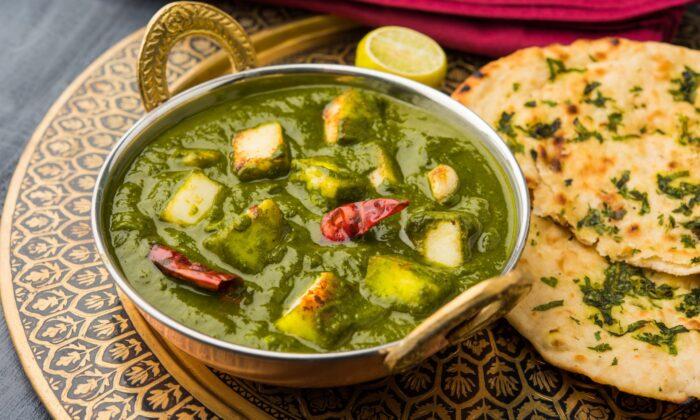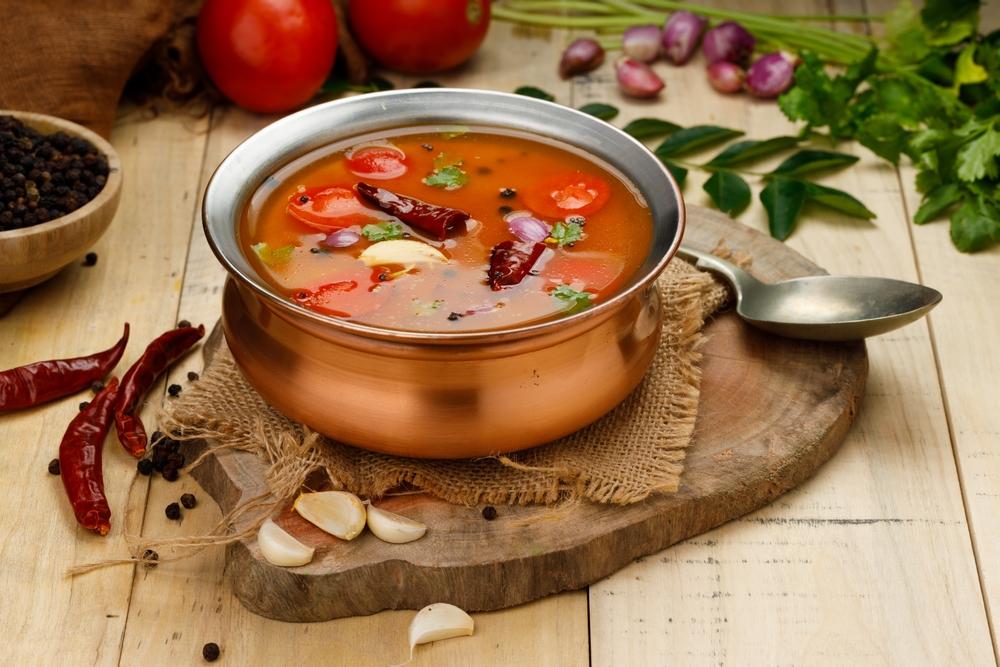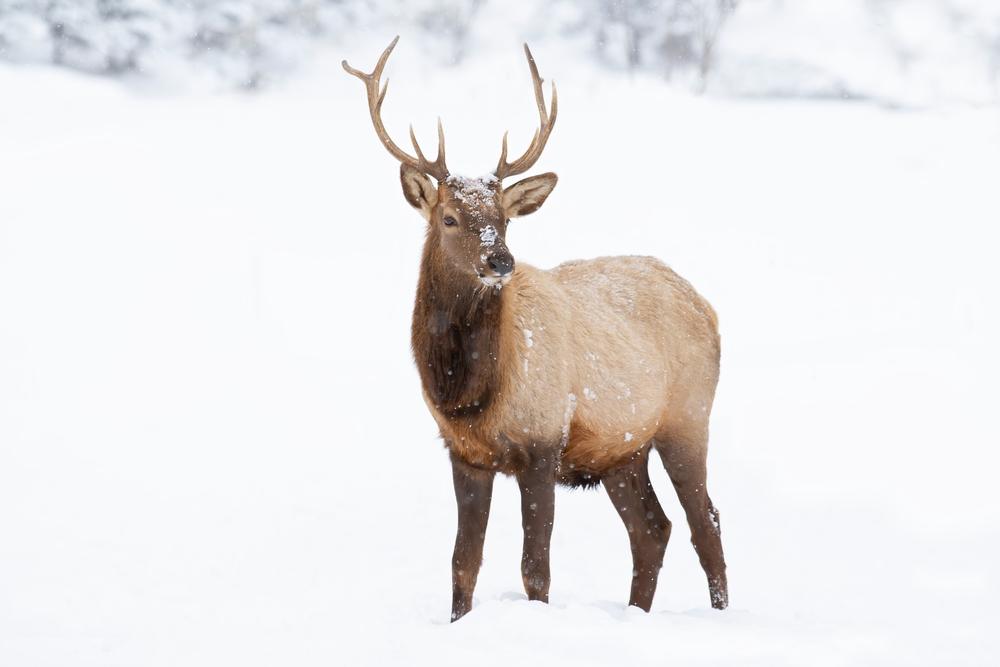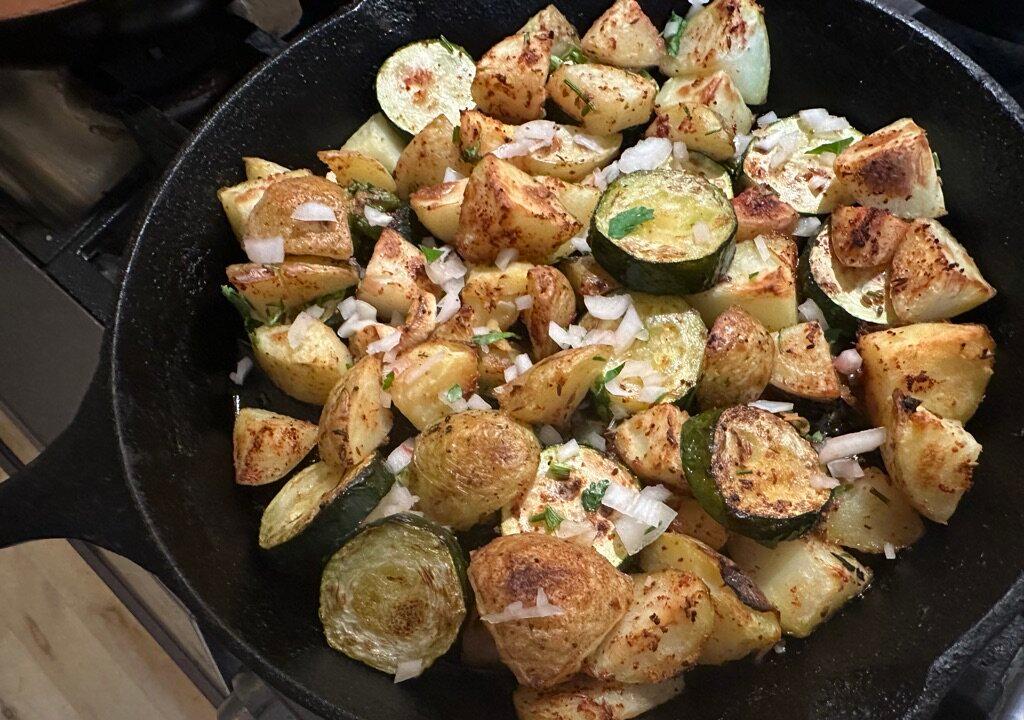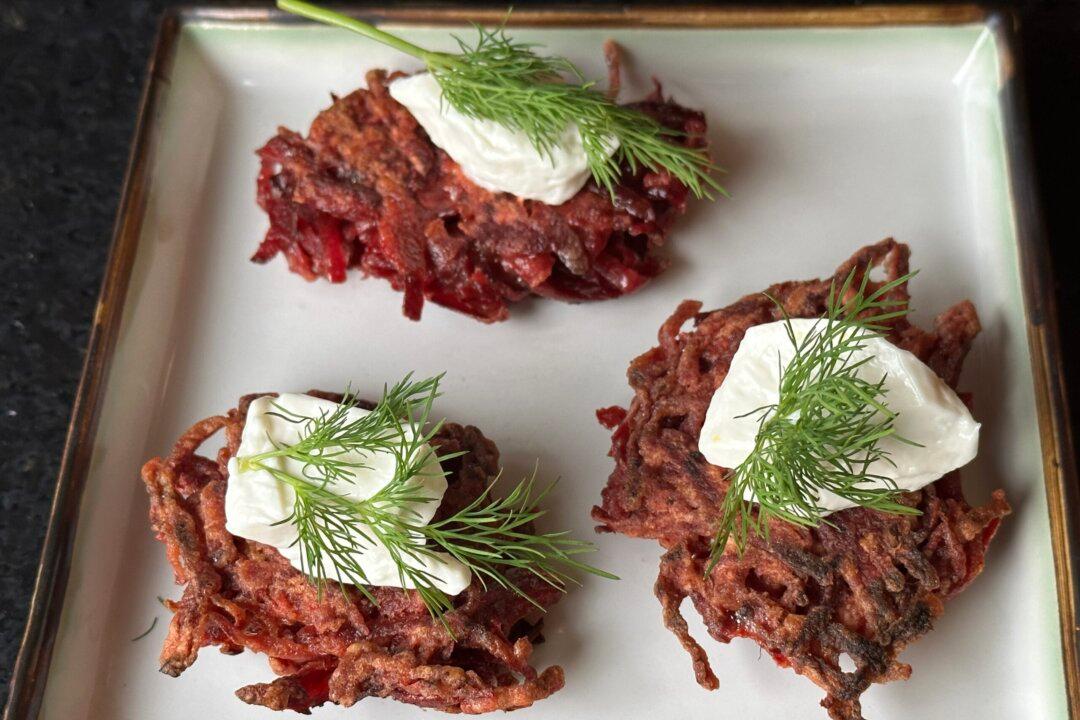I have been celebrating the arrival of spring with helpings of palak paneer, an Indian dish of spinach and homemade cheese. The spinach, pureed, has a thrilling flavor thanks to ginger and serrano peppers and Indian spices. This green sauce envelopes the sweet, nutty cheese, creating a contrast that’s almost as lovely as it is delicious.
Frozen spinach is in season, too, as food processors must clear freezer space to accommodate the new crop, and liquidate last year’s leftovers. The same principle applies to many vegetables. During corn season, look for a sale on frozen corn.
I know that freezer technology has come a long way, but years of trauma are complicated to undo. Standing in the frozen vegetable section, I shook a bag of spinach, and could feel a loose mass of irregularly-shaped material inside. I imagined ice crystals and freezer-burnt spinach, and did not have a good feeling about it, but my recipe called for frozen spinach, so I was going to go for it. At home, I was happy to see bright green frost-free nuggets of rolled spinach.
Palak paneer is often mistaken for saag paneer, a popular Indian restaurant dish. The difference is that saag paneer can contain mustard greens and others like radish and turnip greens in addition to spinach, while palak paneer contains only spinach.
It is a dish you might find anywhere in India, which means there are variations. I can’t say I’ve tried them all, but I would if I could. Of those I have tried, my favorite comes from the blog Feasting at Home. It uses cashews, which add a subtle but rich creaminess, and calls for frozen spinach—but notes you can also use fresh.
Freezing cooks the spinach in a way, so all you have to do is thaw it in the hot pan in the sautéed flavorings, and then we don’t have to wait for it to cool down before it goes into the blender. And who wants to cook and blend a bunch of baby spinach?
But if you are inundated with more spinach than you can handle from your garden or CSA, go for it. While you’re at it, make a big batch and freeze the leftovers, with or without cheese, and save it for later.
But if your spinach is limited, save the fresh spinach for raw use, and make palak paneer with frozen spinach.
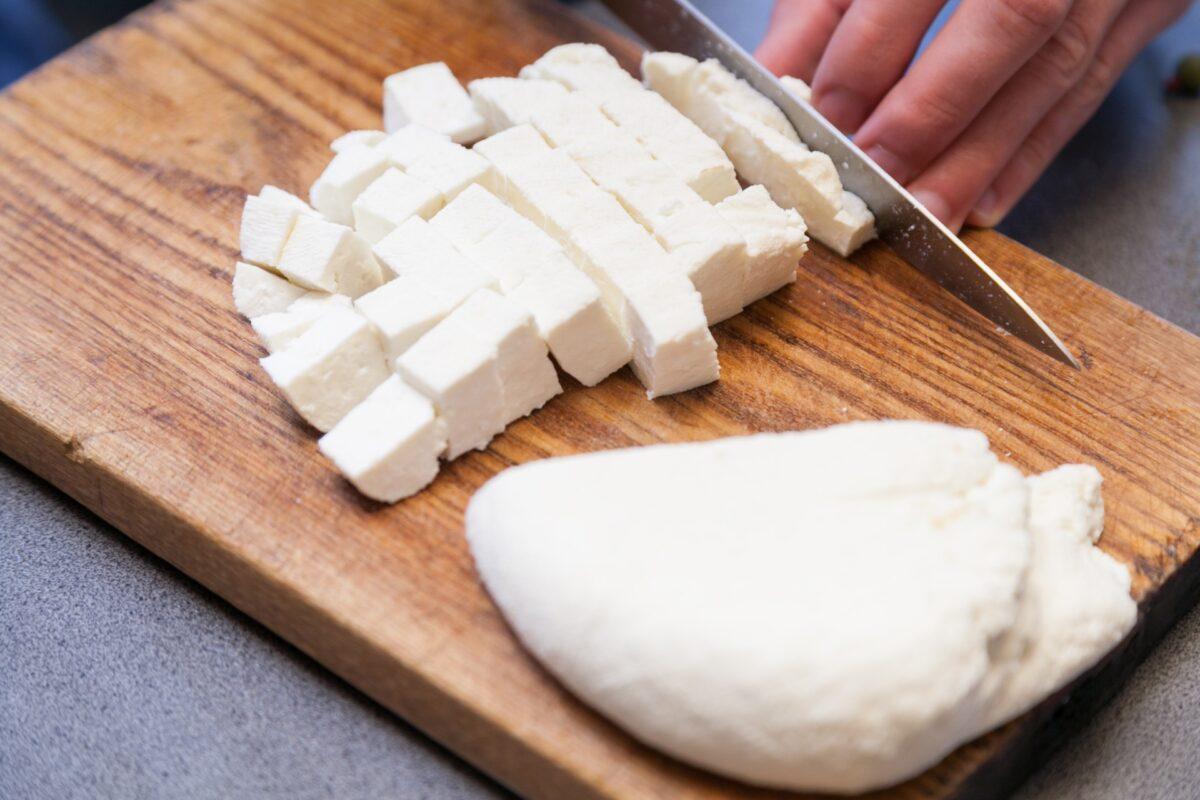
The paneer, aka Indian cheese, is delicious and surprisingly easy to make. You get a grapefruit sized ball of paneer from a gallon of milk, and you press the ball into a disc and then cut into cubes, which some cooks fry in ghee (clarified butter) before adding to the palak. A certain innocence is lost upon frying, but a distinct crunchiness is gained. Whether or not to fry the paneer cubes is a personal choice.
Un-fried paneer is cloud-like, softer and decidedly creamier than fried, and blends blissfully with the creamy spinach sauce unhindered by hard boundaries. The fried cheese, meanwhile, is stiffer, nuttier, sweeter, and of course crunchier, like a dense, chewy mascarpone with an exoskeleton.
Palak Paneer
This flavor-packed dish needs no condiment or garnish, and is lovely atop jasmine or basmati rice. For a vegan version, substitute tofu for the cheese and oil for the ghee.- 1 gallon milk
- 1/2 teaspoon salt
- 6 tablespoons vinegar mixed with 2 cups water
- Cheesecloth
- 1 teaspoons mustard seeds
- 2 teaspoons cumin seeds
- 2 teaspoons coriander seeds
- 5 tablespoons ghee
- 2 teaspoons garam masala
- 1 onion, minced
- 2 garlic cloves, chopped
- 2 tablespoons chopped ginger root
- 2 serrano peppers, chopped
- 1 pound spinach, fresh or frozen
- 1 cup water
- 1/2 cup cashews
- 3/4 cup yogurt
Add the salt and vinegar-water, a splash at a time, in as dispersed a manner as possible, stirring the pot in a slow circle. It should take about 2 minutes to sprinkle in all of the vinegar.
Let it cool to room temperature. It will separate, as the sheets and fragments of curdled milk find each other and cling together as if responding to a curd-specific field of gravity.
While it’s cooling, ladle yourself a cup of curds and whey, a soothing and satisfying snack. Lay out a double layer of cheesecloth over a colander and set it over a pot or bowl to catch the whey, for ricotta cheese or homemade protein powder or whatever.
Carefully pour the curds through the cheesecloth. Pull the corners of the cheesecloth together and use them to tie up the hunk of cheese so it can drain for an hour. Then untie it and press it between two plates with a weight on top, draining the water that squeezes out.
While the cheese presses, toast the mustard, cumin, and coriander seeds in a pan over medium heat for 4 minutes. Add 3 tablespoons of ghee and the garam masala, onions, garlic, ginger, and serranos. When the onions are translucent, after about 12 minutes, add the spinach and a cup of water.
While frozen spinach simply must thaw in the hot pan, fresh spinach should cook down, about 5 minutes. Then, add the cashews, yogurt, and spinach mixture to a blender and blend.
Cut the disc of cheese into cubes, and fry them in a tablespoon of ghee until they are brown on all sides. At serving time, heat the palak in a pan, diluting with water if it’s too thick. Add the cheese cubes and let them heat up with the spinach.

